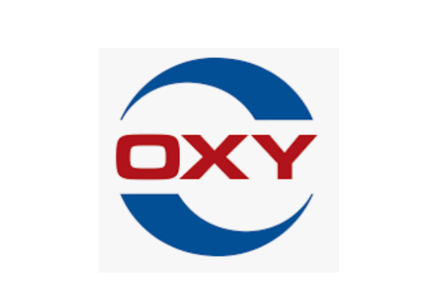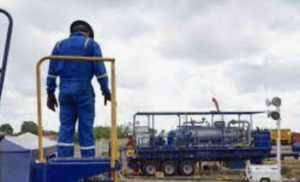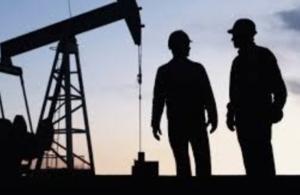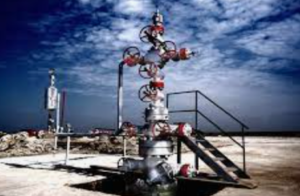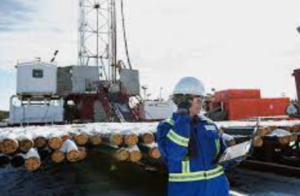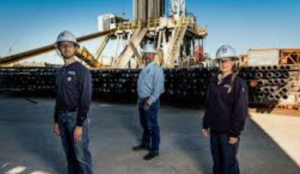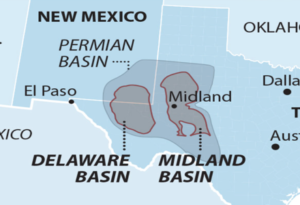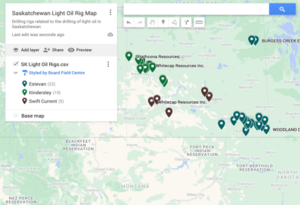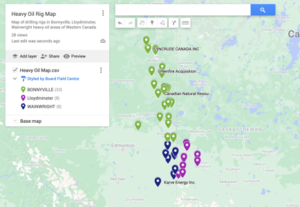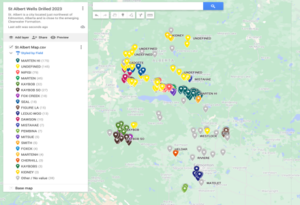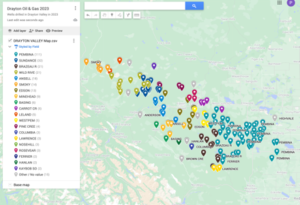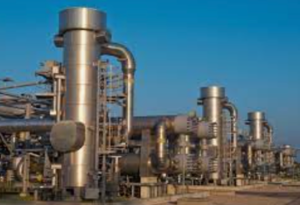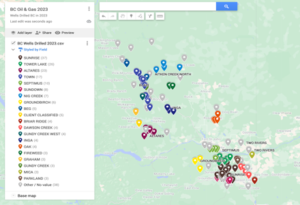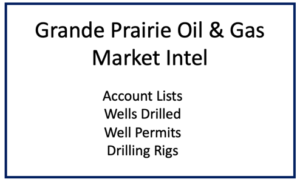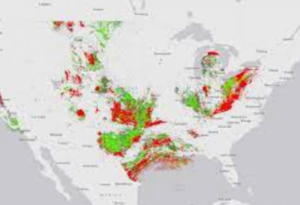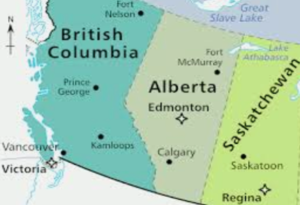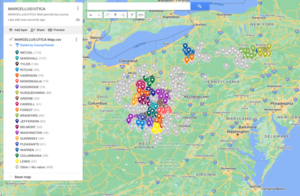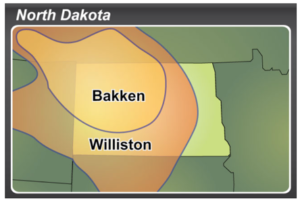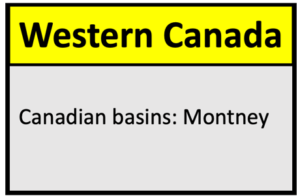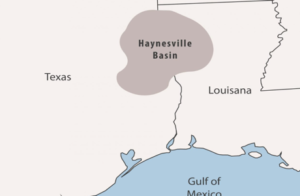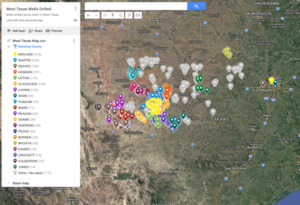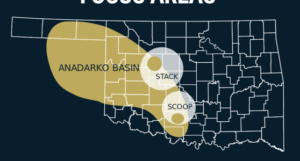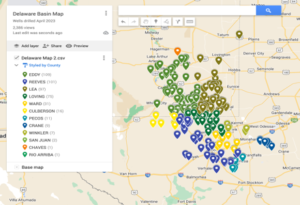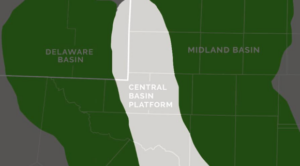Executive Summary
Occidental Petroleum (NYSE:OXY) is a large oil and gas exploration and production company with recent investments towards reducing carbon emissions and has the backing of a large shareholder in the form of the “Oracle from Omaha”, Warren Buffett, the largest equity owner in the world, BlackRock and even the US government is supportive of the green energy initiatives. The earnings have improved in the last few years and the debt levels have come down significantly since the Anadarko acquisition in 2019 and the company has even started to reduce the “Buffett” preferred and started buying back shares. The company is looking to expand and with the latest acquisition of CrownRock, the company would be the second largest producer in the Permian Basin. The valuation is low, and the cash flow yield is high, despite a pullback in the commodity price in 2023. The company is situated well in an environment with oil around $80/barrel and the target is set to $90/share.
Oil & Gas Data Download
Oxy Wells Drilled in the US Since 2023
OXY Wells Drilled Map
Background and Ownership
Occidental Petroleum Corporation is a US based oil and gas producer with 1.2mm barrels per day produced in 2023 predominantly in the Permian basin, that’s around 10% of total US production, with around 4bln proved reserves barrels of oil. It’s also a manufacturer of petrochemicals in the US, Canada, and Chile.
The company owns 49.8% of Western Midstream Partners LP (WES) with a current market cap of $13bln. In 2019 the company bought Anadarko Petroleum in a transaction valued at $55bln including the assumption of Anadarko’s debt and recently the company entered into a purchase agreement to acquire Midland-based (Permian) oil and gas producer CrownRock LP, for cash and stock in a transaction valued at approximately $12bln including the assumption of debt. This transaction is currently under review by the FTC. The Anadarko transaction increased Occidental’s debt levels significant to around $40bln from $10bln. Since then, the debt levels have come down significantly to $19.5bln at the end of 2023, plus the $10bln preferred issued to Berkshire Hathway in the 2019 Anadarko financing was recently paid down to $8.5bln.
Vicki Hollub is the CEO of Occidental and she’s been in the role since 2015 when she also became a board member. She has had different roles at the company since 1981 and clearly has the support of Warren Buffett, with Berkshire providing financing, $10bln preferred at 8%, for the 2019 acquisition of Anadarko. He’s also a 28% holder plus he made some strong remarks in support of her and the company in the last shareholder letter.
The CFO is Sunil Mathew with 25 years of experience in the oil and gas industry and he’s been in various roles at the company since 2004.
The company has 886mm shares outstanding end of Dec 2023 and largest owner by far is Berkshire Hathaway at 243.7mm shares/27.7%, followed by Dodge & Cox, mutual fund manager with 81mm shares/9.2% and then the usual suspects Vanguard around 6.3%, State Street, 4.5% and Blackrock at 4.5%.
There are also warrants outstanding, 83.9mm warrants are held by Berkshire (they expire when no preferred shares are outstanding). There is also 99.5mm of the common stock warrants with a strike of $22/share.
Fully diluted share count after warrants is 1063mm shares and the company bought back 29mm shares in 2023 with an average price of 61.15. The stock is also one of the most shorted energy stock with ~11% of the float sold short as of Mar 26th, 2024.
The board consist of 10 directors, led by Jack B. Moore as the independent Chairman since 2022. And as mentioned the CEO is on the board and several very impressive former CEOs in the industry like Andrew Gould who was the CEO of Schlumberger from 2003 to 2011 and the former US Secretary of Commerce between 2005 and 2009, Carlos M. Gutierrez.
Business Segments
The company’s sales come mostly from its oil and gas exploration and production segment, with $21.3billion in 2023 out of total $28.3billion in revenues. The chemical business contributed $5.3billion in sales and the midstream $2.5bln in sales. The chemical business has the best margins. See below from 2023, 10K.
The company’s production of oil, NGL and gas is predominantly from the Permian basin with 584 million of barrels in 2023 which was up 14% from 2022. See table below from 10K.
The company’s assets grew with the Anadarko acquisition in 2019 and if the company can close on the CrownRock acquisition the assets will continue to grow, specifically in the Permian Basin. As of 2Q2023, the company was ranked fourth in the Permian based on production levels and if closing on CrownRock they will be second largest. The US gets close to half of its total production, 6mm barrels and total US is 13mm barrels per day, from the Permian so it’s a very important and strategic asset for the country. And, for Occidental to have a stronghold in the biggest land basin in the US should make the company more valuable i.e. stock should be trading at a higher valuation.
The chemical business concentrates on the chlorovinyls chain beginning with the co-production of caustic soda and chlorine. In addition, chlorine together with ethylene, is converted into PVC. Chlor-alkali operating rates decreased in 2023 as global demand weakened, most likely due to inflationary pressures. This was the same for demand for PVC. Demand was down 13% for 2023 in the US, and to offset this export volume increased by 30%. Operating rates were down 1% due to weak global market conditions and according to the 10K, high interest rates, slowing housing starts, and inflation continue to keep a lid on US PVC demand.
The Midstream segment is also named Midstream and Marketing and the marketing side consists of marketing substantially all of Occidental’s oil, NGL and natural gas production and help with its transportation and storage capacity. Within this segment Occidental also carries its carbon capture business which needed most of the $656mm in capital deployed in 2023 for the construction of STRATOS. The midstream segment strives to maximize value by optimizing the use of its gathering, processing, transportation, storage and terminal commitments and to provide the oil and gas segment access to domestic and international markets.
The company owns 24.5% in DEL, which owns and operates a 230-mile-long natural gas pipeline, Dolphin Pipeline, which transports gas from Qatar to the UAE and Oman. It also owns 49.8% of Western Midstream Partners. The assets are in Texas, New Mexico, the Rocky Mountains, and North-central Pennsylvania. The business fluctuates a bit depending on commodity prices and the Midland to Gulf Coast oil spreads. For instance, the spread decreased from 36c per barrel to 21c per barrel in 2023 and a 25c change impact operating cash flow by around $65mm per year. Currently WES market cap is above $13 billion so theoretical value to Occidental is $6.5bln.
Carbon-capture Initiatives
The carbon capture business is part of the Midstream and Marketing segment but worth digging into further as these are new initiatives and a significant amount of capital expenditure is directed towards it, around 10% of 2024 capital expenditure budget.
The company has dedicated capital expenditure going forward to research and lower carbon emissions. For 2024 the company expects to spend $600mm on continued construction of Stratos DAC 1, in Ector County, Texas, which is expected to be commercially operational mid-2025. Occidental entered into a JV agreement with BlackRock which provides $550mm of committed investment from BlackRock. The company is looking to develop more sites. And the government is on board as they awarded Occidental $1.2bln for another project, the proposed South Texas DAC Hub in Kleberg County, Texas. This would be a massive hub and supposed to remove 30mm tons of CO2 every year and have storage capacity of 3bln metric tons.
DAC stands for direct air capture and the technology is there to extract CO2 directly from the atmosphere at any location, unlike carbon capture which is generally carried out at the point of emissions such as a steel plant. The carbon dioxide will then be permanently stored in deep geological formations or used for a variety of applications. Occidental’s goal is to reduce emissions and accelerate the path to net zero. The company acquired Carbon Engineering Ltd for $1.1bln in Aug, 2023, although the companies have been working together since 2019 through its subsidiary, 1PointFive, building the plant. Once operational, the plant is expected to capture up to 500,000 metric tons of carbon dioxide per year with the capability to scale up to 1 million metric tons per year. This will be the first plant of its kind. 1PointFive has announced a scenario to deploy 70 DAC facilities worldwide by 2035 under current compliance and market scenarios.
The Occidental chemical business is complementary because it already makes large amounts of potassium hydroxide which is a key chemical to draw carbon dioxide into its processing units.
The company has been signing contracts with a few large companies for taking on Carbon Removal Credits, Amazon for instance signed up for 250k ton over 10 years, and TD Bank 27.5k credits over 4 years with no released purchase price.
However, after digging in on the subject and talking to industry participants it sounds more like the carbon capture business is a cost of doing business. This business won’t be profitable and perhaps never will be according to sources interviewed. The cost per ton will be very high in the foreseeable future as the plants are expensive to build and operational requiring a substantial amount of electricity and even water. But, as mentioned, the company has financial backing from some heavy hitters and the government is giving out subsidies so the venture shouldn’t be a financial burden. The upside for the stock is perhaps these efforts will attract more investors, specifically ESG focused pension funds, into the stock and give them a higher more market-based valuation.
Financial Performance
The company’s performance improved significantly after the lows in 2020 and operating income went from negative $8.3bln in 2020 to $13.7bln in 2022 to fall to $6bln in 2023. The company has grown production, largely due to the Anadarko acquisition, a mentioned before, but of course as an oil and gas producer the company is heavily dependent on mostly oil price which went to average wti $94/barrel in 2022 to average wti $77/barrel in 2023 and natural gas price went from $5.48/mcf to $2.04/mcf. Tables below from 2023, 10K shows how much of an effect the price declines had on sales. Volumes affected sales positively.
The Balance Sheet
As mentioned earlier the company took on a large amount of debt and preferred stock with the acquisition of Anadarko but has since reduced it significantly. The net debt level stood flat between end of 2022 and end of 2023 but was reduced significantly in 2022 when more than $10bln was paid off.
The CrownRock acquisition if it goes through will once again increase debt levels but not as much and cash flows should continue to be strong. The company should be able to quickly reduce debt levels by end of 2025 to current levels. They mentioned in the press release that they intend to repay at least $4.5bln of debt (will raise $10bln to pay for the company) within twelve months of closing the acquisition with proceeds from divestiture program and excess cash flow.
The Permian oil production would increase by 170k barrels per day and would be around 750k barrels per day which would put them bigger than Chevron in the Permian. That would be 12.5% of total Permian production currently around 6mm barrels per day. The company generated $6bln in free cash flow in 2023 despite oil price down almost 20% to average realized price of $77. The company used $1.5bln to reduce the preferred to $8.5bln and the company also spent $1.8bln to buy back shares at an average of $61/shares.
Industry Landscape
The oil and gas industry are notorious for its boom-and-bust cycles through modern times. And we had the last bust cycle from summer 2014 to its low in covid in 2020. The industry has fared better the last couple of years with removed capacity through the bust cycle and improved demand levels from Covid lows. The current environment is best described as still having growth in demand but also production growth, for instance US production has made a strong comeback since Covid lows and back to pre-covid peak levels.
The undersupplied market in 2022 was helped by the US selling of government owned oil inventory so called Strategic Petroleum Reserve or SPR. The strategy worked and the oil price started to go lower mid 2022 after the Russian sanctions pushed wti oil to $114/barrel .
Oil & Gas Operator Lists

